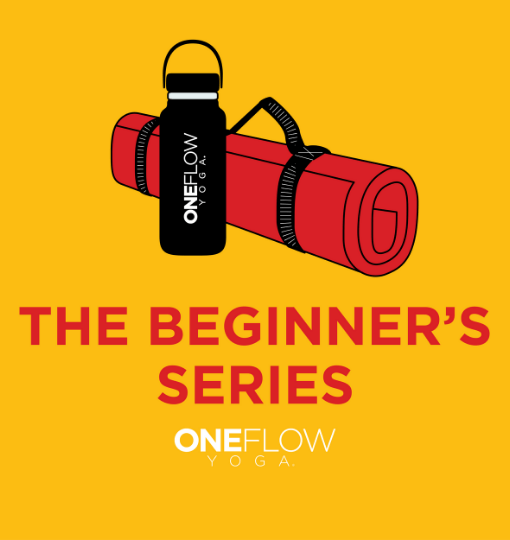We all wish there was a scale that would tell you what the best beginner yoga poses are?
Unfortunately, there’s not.
But, you’re in luck because you have the next best thing, a guide, that’s me, to help you know which postures you should focus on as a beginner. And just to reassure you, I’ve taught yoga since 2005, practiced since 1995, own a yoga studio, and yoga is my full-time endeavor. I even dream about it.
Now you have a friend in the yoga business and I’m here to take care of you and give you the inside scoop.
If your goals are:
- Learn the yoga postures
- Get stronger and more flexible
- Be successful with the practice of yoga
You’ve come to the right place.
If you’re looking for a quick answer to “best yoga poses for beginners,” here it is: do standing postures. More on that later.
Different Yoga Poses for Different Beginners
Not all beginners are the same. It’s helpful to think about people just starting out in yoga as falling into two categories:
- True Beginners
- Active Beginners
Why the difference?
A true beginner is not only starting out with yoga but with physical exercise in general. That doesn’t mean they haven’t moved in the past, just that they have not worked out regularly in the last year or two.
An active beginner is someone who regularly moves their body. They might dance three nights a week, run four days a week, or lift-weights every other day.
Both true beginners and active beginners are new to yoga–that’s the beginner part. Yoga is a skill that takes time to learn and flourish in.
However, active beginners are used to doing physical exercise. They might have a strength and balance advantage compared to a true beginner.
It’s like if you regularly cook dinner but are now trying to learn to cook Thai cuisine. You’d have an advantage over someone who didn’t know how to turn on the oven.
But true beginners have another advantage–newness. I often find it’s better knowing nothing about a subject rather than having to unlearn what you’ve learned. True beginners can be easier to teach because they don’t have habits from other disciplines.
Both categories still need to learn how to do yoga; it’s just that some poses will be easier for you depending on what you’ve done for exercise. Other factors influence this, which we cover in The Beginners Series.
Not All Yoga Poses Are Appropriate for Beginners
There are 200 yoga poses done in modern yoga, defined by a yoga teacher named B.K.S. Iyengar, in his book, Light on Yoga. Iyengar offers a scale in his book of 1-60 but it’s not helpful as it’s wildly all over the place.
For instance, he rates tadasana, mountain pose, as a 1, the “easiest” kind of posture. But then he ranks purvottanasana (pictured below), front body stretched out pose as a 1 as well–which it’s not.
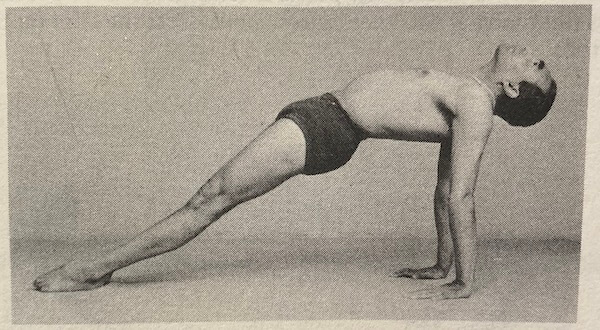
From there, the scale takes off. Many poses rated as the most challenging require a lot of mobility, particularly in your hips. If you’ve been a runner or cyclist, or even sit during the day, you’re going to find hip mobility hard.
Hanumanasana, for instance, which we might call the splits, comes in at a 36. The majority of people would find it challenging to plop right into splits. Can you get there over time? Maybe, but it will take time, effort, and patience. This is definitely not an appropriate yoga pose for a beginner.
It’s impossible to give a definitive list of what the best yoga poses for a beginner might be, and it would be beside the point. Even Iyengar’s rating scale seems to be based on what he could do, rather than others. Yoga teaches self-awareness, and you can bring that awareness to the different postures to decide if it is right for you.
What we can do is give you some helpful tips to get started:
- Start with simpler postures, meaning they have few moving parts and more symmetry. Tadasana, mountain pose, is one of the simplest postures. A lunge posture is more difficult than tadasana because one leg is behind the other.
- If you feel pain, stop, and reassess. We talk a lot about discomfort in yoga, but we never want a pose to be painful.
- How do you know a posture is appropriate for you? You’ll be able to breathe in a relaxed manner.
- Repetition is your friend. Your body gets stronger depending on how you use it, so do the same postures again and again.
You can see results in as little as 30 days, but only if you practice yoga regularly.
Think Of Yoga Poses As Pieces
As a yoga teacher, I look at a yoga pose as both a shape and a collection of pieces.
Take tadasana, mountain pose, I see a standing posture AND legs straightening, spine telescoping, and feet rooting.
It’s helpful as a new yoga practitioner to think about it that way, too. For each of those pieces is an opportunity to develop strength, balance, and flexibility.
That takes the pressure off because we can focus on one action instead of all of them. I’ll say that again. Instead of focusing on entire poses, you can focus on individual movements.
Yes, over time, we’ll put them together, but not at first. It’s like a baseball player who focuses on hitting separately from throwing and catching.
This piece-by-piece method I’m describing is not commonly taught, but it’s something to be aware of because it will help you learn the yoga postures.
How do you apply this? When you’re practicing yoga, whether online or in person, listen to the cue the teacher offers. If she says straighten your leg, can you actually straighten your leg? If not, where does it seem to stop? That will tell you where to focus your attention.
As a Beginner Start With Standing Poses
Recall there are 200 yoga poses offered in modern yoga. Of those, you commonly see 50 done in classes, which narrows things down.
To divide them even further, you need to know that yoga poses are divided further into 6 classifications. By far, standing poses are the classification beginners should focus on.
There are many advantages to starting with standing poses in that they:
- Help you build strength, flexibility, and balance.
- Are foundational and comprise some of the most common yoga postures.
- Are more stable than other types of poses.
- Don’t require you to get up and down from the floor.
- Teach components of the other classifications except for arm balances and inversions.
Standing yoga poses are inherently more stable than other types of poses because, in most, you have two feet on the ground. This keeps you safer as you’re learning.
Below are the 12 yoga poses I would recommend for a beginner, all of which are standing postures.
Mountain
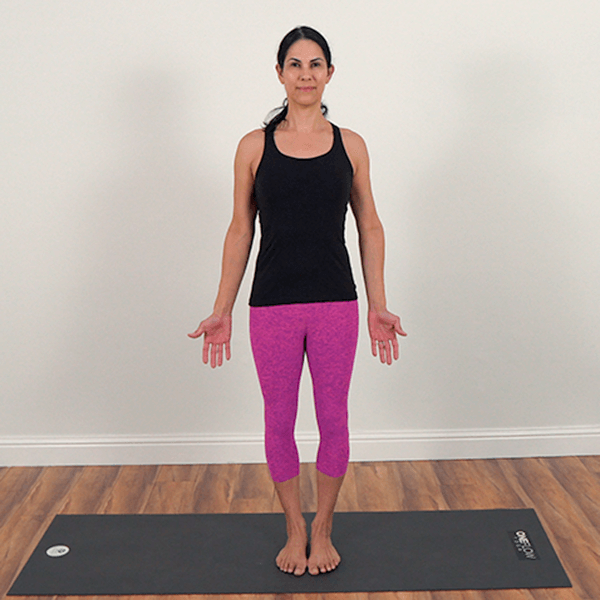
High Lunge also called crescent
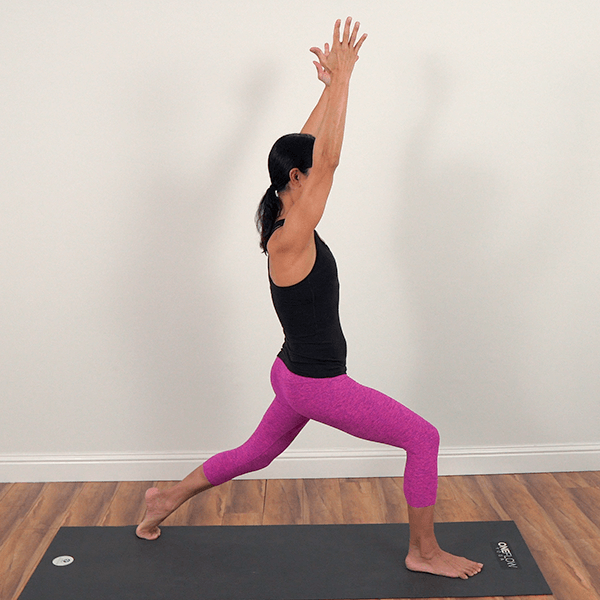
Warrior 2

Open Arm Twist

Utkatasana
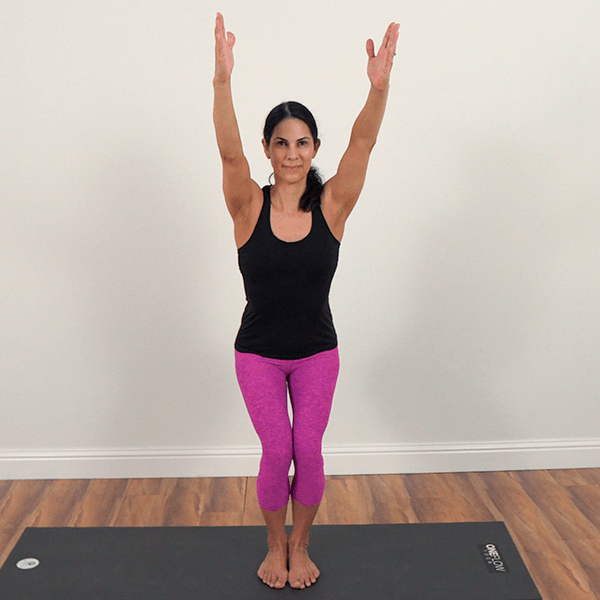
Triangle
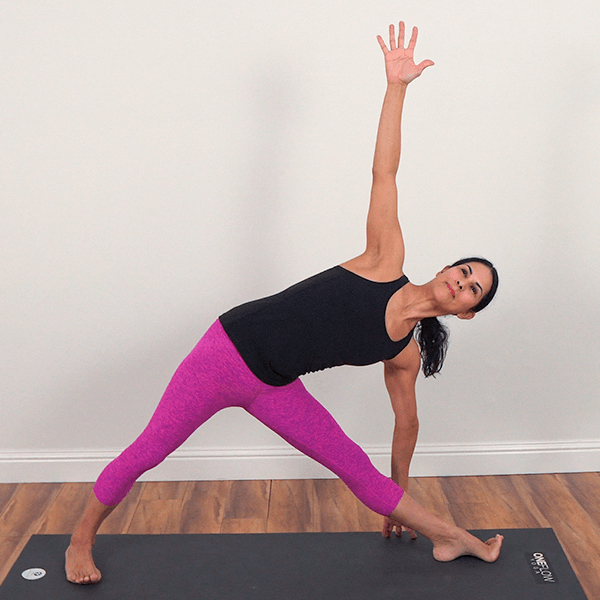
Tree
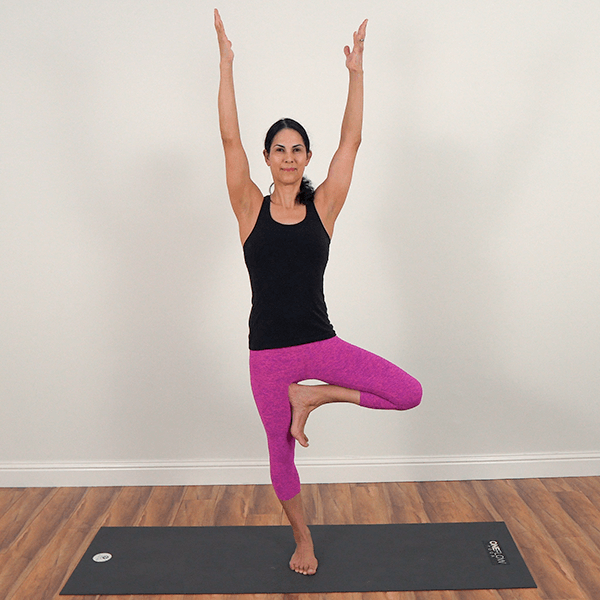
Extended Side Angle
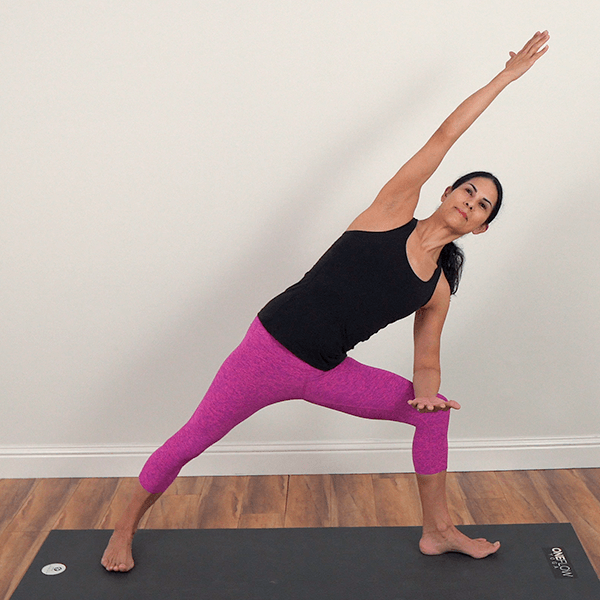
Half-way Lift
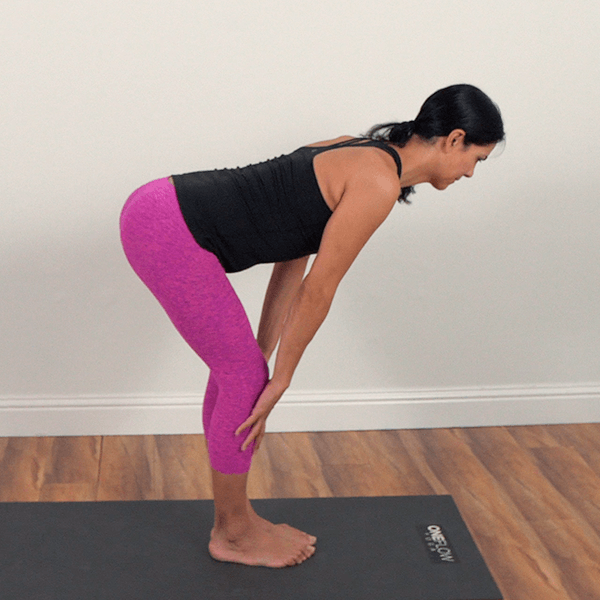
Wide-Legged Forward Fold
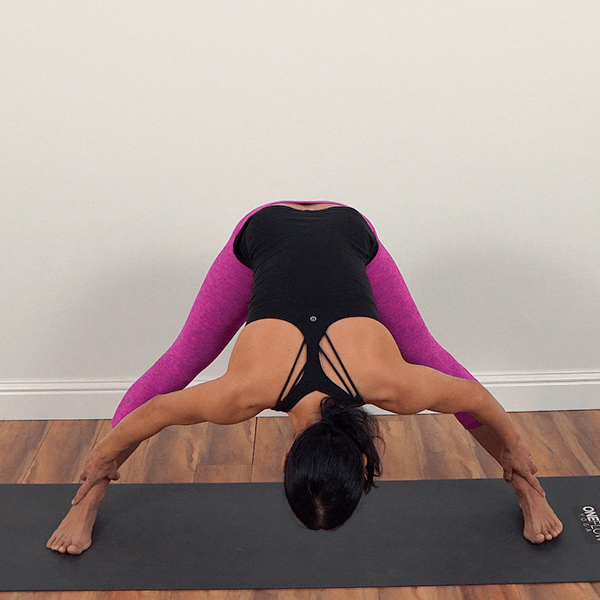
Standing Back Bend
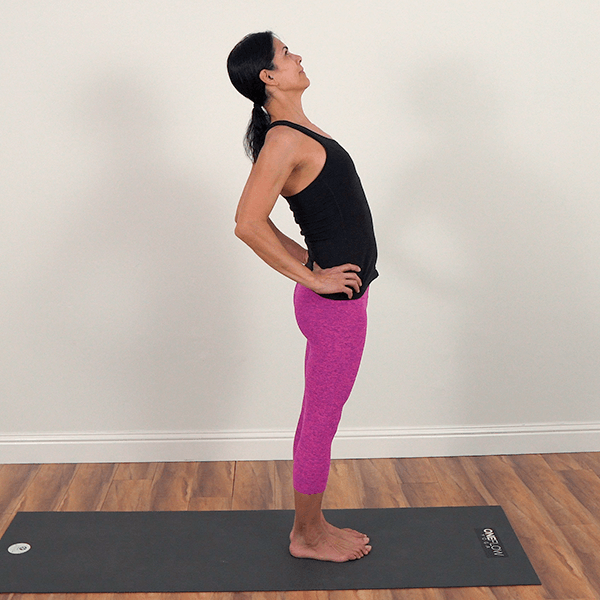
Standing Side Stretch
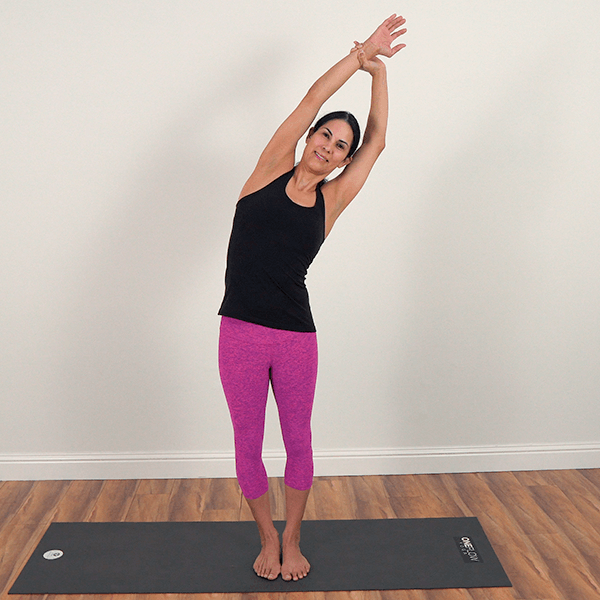
With 12 yoga poses, 479 million combinations are possible, so you have a lot to work with.
Take your time with them. Remember, you want to repeat postures frequently, especially if you’re new, because this is how you build your skill and your strength.
Most people go too big too soon and want to pile a bunch of complicated poses on. This list may not make you Instagram famous, but it will help keep you safer and help prevent injury.
And if you practice them well, they will help you be successful with yoga.
The Difference Between Beginner and Advanced Yoga Poses
The next question becomes, “what is the difference between a beginner and an advanced yoga pose?” The answer may shock you because it’s not what pose you are doing, it’s how you are doing it.
Darren Rhodes and Jason Crandell are both well-known and well-regarded yoga teachers. They both chose to depict themselves in Warrior 2 on the cover of manuals meant for teachers and advanced practitioners. This is important because Darren can do all 200 poses and created a beautiful poster that documents his multi-year journey to do them.
Jason is no slouch either when it comes to poses, and when I asked him about why Warrior 2, he said something along the lines of recognizing the skill it is done with. In other words, do the simple beautifully.
Yoga is not about the yoga poses. We use yoga poses to do yoga, but they are not yoga.
Yoga is about paying attention. It’s learning to listen to your body and feel what you’re feeling. As we progress in yoga we become more empathetic and there is a qualitative difference in our relationships.
The Best Yoga Pose for Beginners
So what is the best yoga pose for a beginner?
It’s personal because the best yoga pose for you will be different for someone else. And you’ll find it varies from day-to-day.
The best yoga pose is where you can do yoga–breathe, pay attention, and feel. The pose where you can ground, relax and reconnect is the one for you, whether you are a beginner or have been practicing for decades.

